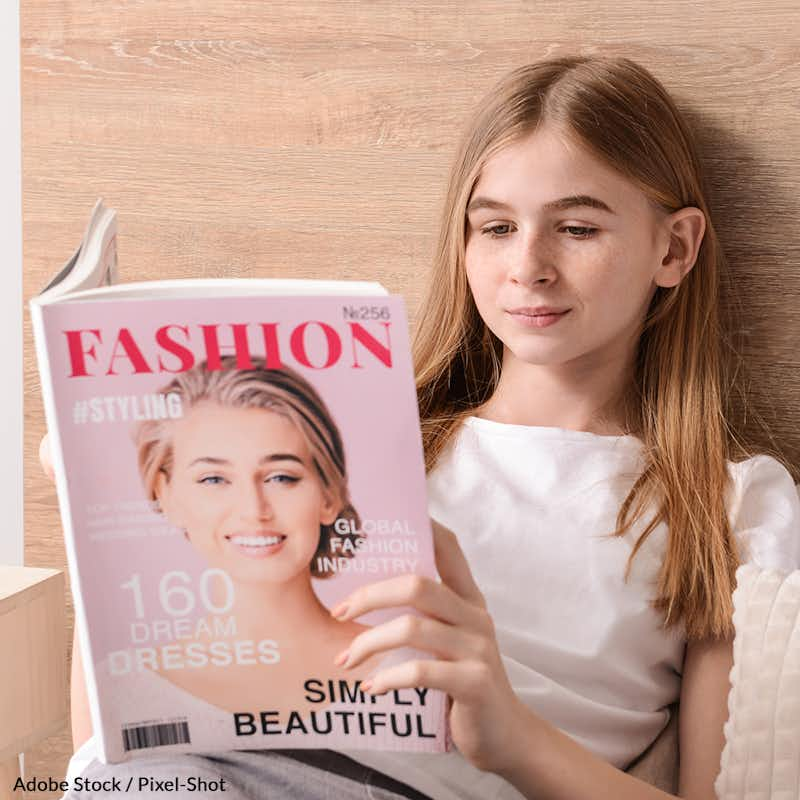Women's Magazines: We Want the Truth!
8,346 signatures toward our 50,000 Goal
Sponsor: The Breast Cancer Site
Tell Teen Vogue to start representing REAL women!

Growing up female is tough these days. With so much emphasis placed on women's looks, it's a struggle to go through life without falling prey to stereotypes and images of the perfect body.
The media is the worst offender. You can't walk down the street without being confronted with images of skinny girls and beautiful models. Imagery like this is what perpetuates eating disorders and anguish girls experience in trying to fit the mold.
Many news organizations hold strict rules against photo manipulation, which fashion, women's and lifestyle publications are more lenient towards. Though it is not stated outright, retouching and thinning models and celebrities is not just standard procedure, it's expected and often demanded by publicists for such magazines1.
Former model Georgina Wilkin, 23, a former model developed an eating disorder because of the pressures of the job.
"I've had a few times where I've worked for a magazine and the magazine's come out and I hardly even recognize myself. My legs have been skimmed off, my pores have been eliminated, my nose has been straightened," she told the BBC2. "I felt awful. You feel that what you are as a human being isn't good enough."
The effects of airbrushing aren't limited to models, either. A study on the exposure of such airbrushed images on young women found that while girls typically begin to learn about the airbrushing process around 7th grade, they have not developed the knowledge to protect themselves against the implications of airbrushed images until they are older adolescents. And younger girls have even less defense against these tactics3.
The result is almost always reduced body image, which can have damaging effects in the long term.
Today's teen magazines do little to stop enforcing the stereotype; airbrushed photos and tiny models are still the norm. But that's not how real women look. These magazines are tricking girls into thinking their dreams can come true if they are thin and beautiful.
In 2011, Seventeen published an eight-point "Body Image Treaty," pledging their commitment to "celebrating every kind of beauty." This includes:
- Never changing girls' body or face shapes
- Featuring real girls and models who are healthy
- Being more transparent about the photo-shoot-to-publication process
We need magazines to do the same to help girls reach their fullest potential — no matter what they look like or choose to wear.
Ask Teen Vogue magazine editors to ditch the deceit and GET REAL!
- Jessica Bennett, Newsweek (May 1, 2008), "The Backlash Against Magazine Airbrushing."
- Tulip Mazumdar, BBC (15 October 2013), "What does it feel like to be airbrushed?"
- Allison Kiefner-Burmeister (May 2014), "The Benefits and Trajectory of Airbrushing-based Media Literacy Among Girls."
The Petition:
Dear Teen Vogue Editor-in-Chief:
While I realize you have an inherent interest in selling magazines, I believe you have a greater moral responsibility to girls and women.
You see, your publications depict nothing but thin and conventionally gorgeous females. In doing this, you are perpetuating a dangerous stereotype that causes millions of girls to lose their self esteem and develop eating disorders.
As prominent American publications, you have a unique opportunity to change the way the media sees women; in essence you can help the world value women for more than just their looks or how much they weigh. And since adolescence is the time in which girls are most vulnerable, yours is an especially extraordinary chance to shift this diseased thinking.
I am writing to ask that you feature healthy girls of all shapes and sizes, never change girls' body or face shapes, be more transparent about the photo-shoot-to-publication process, and show us how much you truly value natural beauty.
You can help change the world and save girls from unnecessary pain and suffering.
Sincerely,